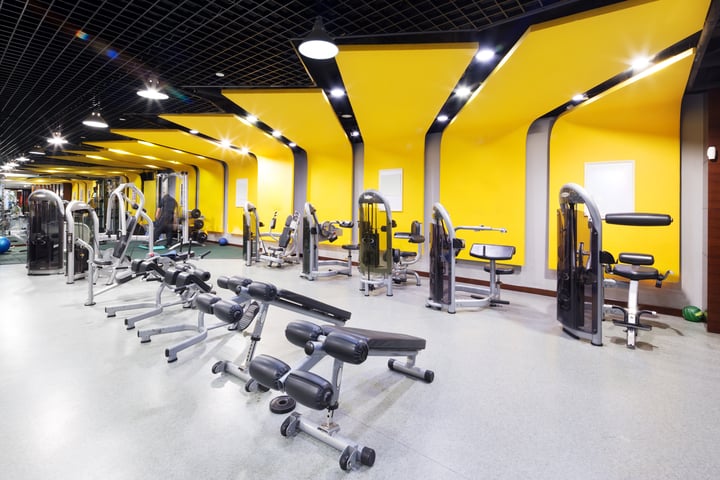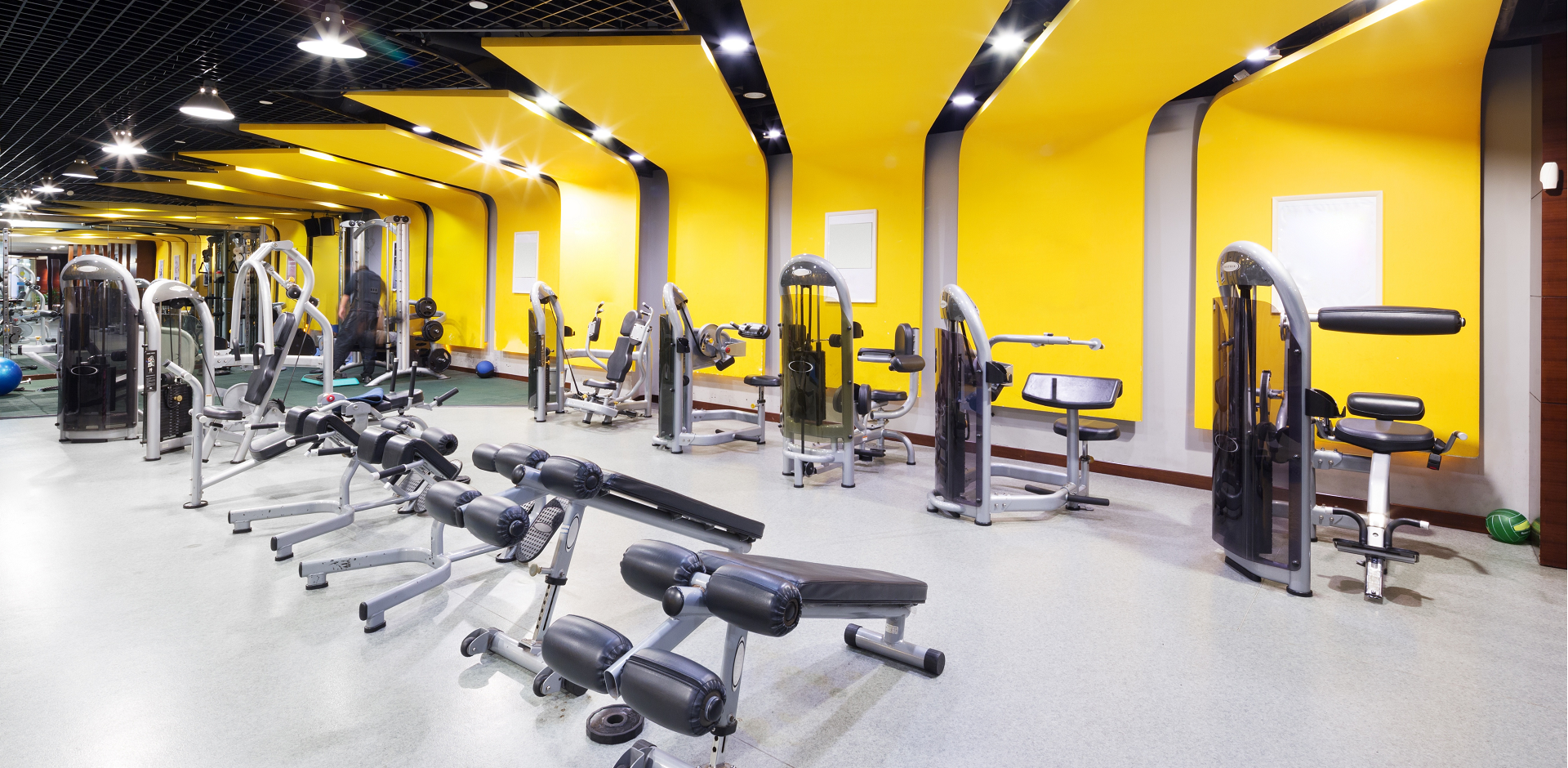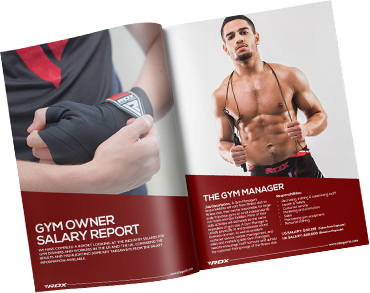The floorplan of your fitness club is one of the most important factors in the success of your business. Get it right and you’ll empower your members to get the most out of the facility and have them coming back. Get it wrong and you’ll make certain members feel uncomfortable, ruin their workouts and risk alienating new members who come to have a look around.

The main considerations for choosing your floor plan, in order of importance, are:
- Safety
- Profitability
- Convenience
- Aesthetics
If you’re stuck on deciding any detail of your plan, revert to these four key considerations. If it’s safe, is it also profitable? If it’s both, does it offer convenience to your members? If the answer is yes, then you can think about making it pretty. In many cases, these factors will be complementary. For example, the safest place to locate a heavy punch bag is in the corner of a room. It’s also the most convenient.
The floor plan will also impact other planning decisions. For example, what kind of flooring you install around the gym, where to locate power sources and even where to hang mirrors.
First things first, draw out your floor plan (even if you can’t draw)
It sounds obvious, but this is advice you absolutely have to take. You don’t need to be a master draughtsman either. Even if you just use a pencil and paper - rather than the various free floor plan software programmes out there - to sketch out your design.
The reason for this is quite simple. If you don’t sketch out a plan and just start moving equipment around, you’ll miss opportunities and cause unnecessary problems.
By sketching out your gym’s floor plan, you’ll be able to visualise not only where key equipment needs to be located, but also the flow of traffic, pinch points and potential safety problems.
Safety considerations when creating a floor plan for your fitness club
Take a look around any gym you want and you’ll notice they all have one thing in common; open spaces in front of fire exits.
Obviously you don’t want bulky machines in the way of fire exits, nor do you want to encourage your members to leave free weights, kettlebells or other gym equipment anywhere near your fire escape. People could trip and injure themselves when exiting the space.
This doesn’t mean you need to allocate ‘dead space’ to ensure you meet fire and safety regulations, it just means you put your stretching and warm-down area nearest to the fire exit. And this is good news, because you’ve just made your first planning decision.
Establish the activity key areas
Assuming you’re not building a gym from scratch, you don’t really need to worry about where to put changing rooms and toilets. That’s pretty much dictated by the plumbing and the style of the building. So you can freely focus on designing your ‘active space’ - that is space that is used for exercise.

Most gyms are split into four key zones; warm-up, cardio, free weights and resistance machines.
Some gyms and fitness clubs may have extra facilities too, like spin studios, boxing rings, solariums or even a pool. But for the purposes of your gym floor plan, let’s keep it simple.
The warm-up area is simple to design. Since you want your warm-up area to incorporate your fire escape, it needs to be adjacent to at least one exterior wall. Allow enough space for at least five yoga mats to be spaced at least 1 ft apart.
The cardio area, which may include treadmills, running machines and bikes is less simple. You need more space. Fortunately, due to the fact that the equipment located in here is relatively uniform in size, you can arrange it as a grid. It’s up to you how you arrange the equipment here, provided you ensure no equipment is ‘boxed off’ by other equipment.
The cardio area is the only area that definitely requires a power source. In most cases, you’ll want to design this in so the power runs under the floor. Naturally, you won’t want power cables tracking across the gym floor for obvious reasons. If you can’t achieve this for any reason, place powered cardio equipment such as treadmills and power plates facing walls so you can power them in an aesthetically pleasing way.
The free weights area needs some special consideration. These places are noisy, often crowded and to some gym users they can be a little intimidating. We’re not advocating that you hide your free weights area at the back where people won’t see it, but we do recommend reducing the need to navigate through here to access other areas.
The last thing you want is a high degree of foot traffic being forced through an area where large amounts of heavy objects are being moved around. You should also consider if you want the free weights area close to the entrance. The noise and intensity of a nicely busy weights area is great for a motivated lifting session, but it might not be the most welcoming sight on entry.
The good news about your free weights area is that you’ll have very few fixed objects, so you can relocate it relatively easily if necessary.
The resistance machine area also requires careful consideration. Go into any gym or fitness club and you’ll notice that resistance machines - in most cases - are positioned facing inward. This isn’t always the case, but where space permits you should aim to achieve this. There’s something unrelentingly boring about completing five sets of seated chest presses while staring at a wall.
Impact of gym floor plan on profitability
Once you’ve considered all of the safety implications of your gym floor plan, it’s time to think about profitability. Boiled down, the profitability of your floor plan depends on ensuring there’s space for as many people as possible to work out as possible.
The best way to approach this is imagine that whenever a member is forced to wait, they’re one step closer to cancelling their membership.
So instead of making them wait, arrange your space so it includes smaller items that you can have more of.
A functional trainer takes up approximately 7 square feet of space, allowing for the range of motion of the user. While it enables you to perform a wide range of different exercises, it can only be used by one person at a time. Take away the functional trainer and you’ve got space for at least three people to do kettlebell exercises. That’s two people not having to wait.
Not only are the kettlebells cheaper to buy and maintain, you’re less likely to have people queueing up or waiting to finish their workout.
This benefit of this relies on basic human psychology. Once a person has made the mental commitment to go to the gym, they’re motivated to workout. If they don’t see they functional trainer, they won’t miss it. They’ll use other equipment and get their workout done. If they do see a functional trainer, but it’s occupied, they’ll feel like they’re missing out.
So instead of squeezing a functional trainer into your gym when space is tight, give the space over to portable equipment.
The same is true for cardio machines. They’re great to have, but if you’ve got room for no more than two, you’re going to get queues.
So if you’re limited on space, make your free weights section larger than your cardio section.
Extra revenue streams
You’ll most likely want to offer a range of products and accessories to your customers so having a plan to sell gym merchandise is key. This doesn’t need to take up a lot of space or even cost a lot of money. A vending machine selling water, protein shakes, hand towels and even padlocks for the lockers is not only convenient for your members, but a relatively low maintenance revenue source.
Without exception, these should be placed as close to the entrance as possible. Your members are more likely to make a purchase at the beginning or end of their workout, so catch them on the way in or on the way out.
Choosing the perfect gym floor plan for your club doesn’t need to complex or expensive. There are plenty of free tools to help get you started.
The basic principles of floor layout are the same, regardless of size and style of gym. Prioritise safety, then make decisions that drive profitability and align with your gym marketing budget. If you can do this while keeping things convenient and aesthetically pleasing for your members, you’re on the right path.


